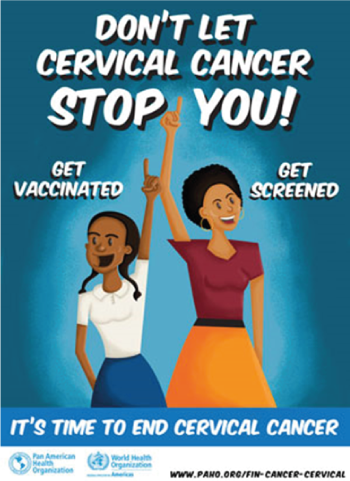There she sat, scared, anxious and curious. No one walked through her ward without noticing her. It wasn’t her beauty that attracted them but it was the stench around her. To make the matter worse, her husband also left her in the predicament. That was forty – six – year old Sharon living with CERVICAL CANCER.
The cervix is the narrow part of the uterus. Most times, it is referred to as the neck of the womb. Cervical cancer results from persistent high-risk HPV (Human Papilloma Virus) infection. HPV infection is spread during sexual intercourse. The infection is very common, following sexual intercourse.
WHAT MAKES AN INDIVIDUAL PREDISPOSED TO HAVING CERVICAL CANCER
- Having Sex at an early age
- Women who are immunocompromised, for example human immunodeficiency virus (HIV) patients and transplant recipients.
- Individual with multiple sexual partners
- Individuals with partners with multiple sexual partners.
WHAT SYMPTOMS AND SIGNS WILL YOU HAVE IF YOU HAVE CERVICAL CANCER?
This is variable, as patients with microscopic diseases are asymptomatic. However, others may have:
- Abnormal bleeding during periods and sexual intercourse, and post-menopausal bleeding
- Pelvic pain
- Rectal incontinence
- Pallor
- Oliguria (low urine volume), from renal failure
- A cervical mass
- Vaginal discharge with strong odor
WHAT INVESTIGATIONS SHOULD I DO?
- At the clinic, a pelvic and speculum examination can be done which reveals a cervical mass bleeding on contact.
- Pap Smear: This is usually use for the screening of patient in which exfoliated cells from the cervix are taken for cytology
- Colposcopy: This is the examination of a magnified cervix, using a light source. It can also be used for treatment.

HOW CAN CERVICAL CANCER BE TREATED?
This depends on the disease as found in stages
EARLY STAGE: Surgery is the common treatment option at this stage. Herein, a loop excision can be made. In reducing the risk of recurrence, radiotherapy can be done.
LATE STAGE: Cancerous cells in this instance must have invaded the other areas of the body. Only palliatives such as blood transfusion for anemic patients, analgesics to relieve pain, etc, can help to cushion the effects of the health impacts.
PREVENTION
Luckily, cervical cancer is preventable. It is one of the few preventable cancers. This is done through vaccination against HPV, which is the implicated organism. Every sexually active woman should receive this vaccine.

SCREENING
Screening for cervical cancer is done through a pap smear. This ensures that the cancer is picked up at the very early stage when it is still curable.
KEY NOTE
The cervix is a reproductive organ and it is only found in women. Cervical cancer is fatal. However, fatality can be prevented through an early diagnosis. So, it is highly recommended that vaccines be taken when the female starts having sexual intercourse.
[CP_APP_HOUR_BOOKING id=”1″]

Dr Odusanya Bilikisu Oluwaseun, is a medical doctor and a graduate of Olabisi Onabanjo university, Ogun state, Nigeria.
She is a poet, reader and researcher, with keen interest in Global health, and management with emphasis on how these affects maternal and child health.
She has a good qualitative and quantitative data analysis skills. A high standing academic track record, and communicates fluently in English, Yoruba, and Hausa.

